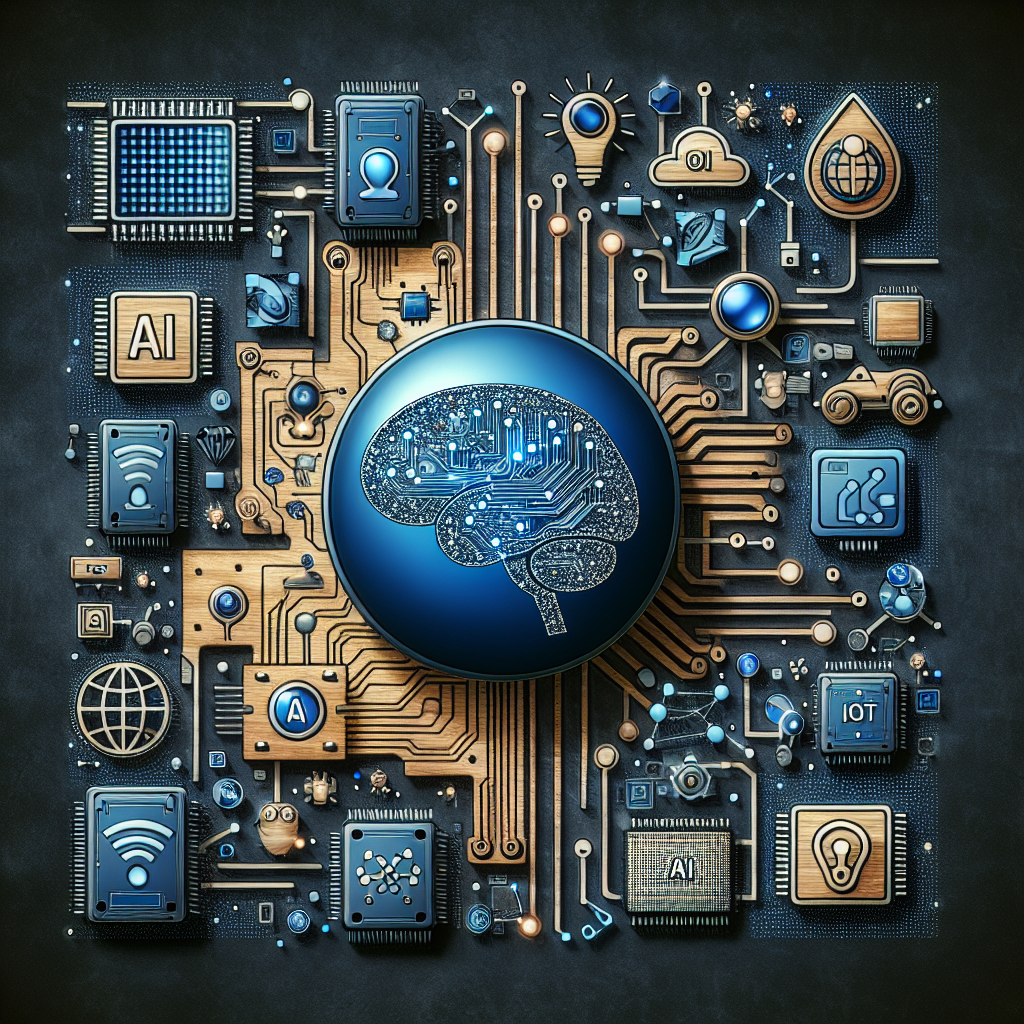In recent years, the Internet of Things (IoT) has become increasingly popular as more and more devices are connected to the internet, allowing them to communicate with each other and with users. This connectivity has enabled a wide range of applications, from smart home devices to industrial automation systems. However, as the number of connected devices continues to grow, managing and analyzing the vast amounts of data generated by these devices has become a significant challenge. This is where artificial intelligence (AI) can play a crucial role in enhancing connectivity in the IoT ecosystem.
AI algorithms can help make sense of the massive amounts of data generated by IoT devices, enabling more efficient data processing, analysis, and decision-making. By deploying AI in IoT systems, organizations can leverage the power of machine learning and predictive analytics to optimize operations, improve user experiences, and drive innovation. In this article, we will explore the benefits of AI deployment in the IoT space and discuss how it can enhance connectivity and enable new capabilities.
Benefits of AI Deployment in IoT
1. Improved Data Processing: AI algorithms can process and analyze large volumes of data generated by IoT devices much faster and more accurately than human operators. This enables organizations to extract valuable insights from the data in real-time, leading to more informed decision-making and improved operational efficiency.
2. Predictive Maintenance: By using AI algorithms to analyze data from IoT sensors, organizations can predict when equipment is likely to fail and proactively schedule maintenance before a breakdown occurs. This can help reduce downtime, extend the lifespan of equipment, and lower maintenance costs.
3. Enhanced Security: AI-powered cybersecurity solutions can help detect and respond to cyber threats in real-time, protecting IoT devices and networks from malicious attacks. AI algorithms can analyze network traffic patterns and identify anomalies that may indicate a security breach, enabling organizations to take corrective action before any damage is done.
4. Personalized User Experiences: AI algorithms can analyze user data collected from IoT devices to personalize services and recommendations based on individual preferences and behavior. This can enhance user experiences and drive customer loyalty.
5. Energy Efficiency: AI algorithms can optimize energy consumption in smart buildings and homes by analyzing data from IoT sensors and adjusting lighting, heating, and cooling systems based on occupancy patterns and environmental conditions. This can help reduce energy costs and minimize environmental impact.
AI Deployment in IoT Use Cases
1. Smart Home Automation: AI-powered virtual assistants like Amazon Alexa and Google Assistant can control smart home devices such as thermostats, lights, and security cameras, enabling users to automate routine tasks and control their homes remotely.
2. Industrial IoT: AI algorithms can analyze data from sensors in manufacturing plants to optimize production processes, improve quality control, and prevent equipment failures. Predictive maintenance solutions can help reduce downtime and increase productivity.
3. Healthcare Monitoring: AI-powered wearable devices can monitor patients’ vital signs and alert healthcare providers to potential health issues in real-time. This can help improve patient outcomes and reduce healthcare costs.
4. Smart Cities: AI algorithms can analyze data from IoT sensors deployed throughout cities to optimize traffic flow, reduce energy consumption, and improve public safety. Smart city solutions can help make urban areas more sustainable and livable.
5. Agriculture: AI-powered drones equipped with IoT sensors can monitor crop health, soil moisture levels, and weather conditions to optimize irrigation and fertilization practices. This can help farmers increase crop yields and reduce water usage.
FAQs
Q: How does AI enhance connectivity in IoT systems?
A: AI algorithms can process and analyze large volumes of data generated by IoT devices, enabling organizations to extract valuable insights in real-time and make more informed decisions. This enhances connectivity by enabling devices to communicate more efficiently and effectively with each other and with users.
Q: What are some challenges of deploying AI in IoT systems?
A: Some challenges of deploying AI in IoT systems include data privacy and security concerns, interoperability issues between different devices and platforms, and the need for specialized skills and expertise to develop and deploy AI algorithms.
Q: What are some examples of AI deployment in IoT use cases?
A: Some examples of AI deployment in IoT use cases include smart home automation, industrial IoT for predictive maintenance and quality control, healthcare monitoring with wearable devices, smart cities for traffic optimization and energy efficiency, and precision agriculture for crop monitoring and optimization.
Q: How can organizations benefit from deploying AI in IoT systems?
A: Organizations can benefit from deploying AI in IoT systems by improving operational efficiency, reducing downtime and maintenance costs, enhancing cybersecurity, personalizing user experiences, and optimizing energy consumption. AI deployment in IoT systems can help drive innovation and competitive advantage in today’s digital economy.
In conclusion, AI deployment in IoT systems can enhance connectivity and enable new capabilities that drive innovation and improve operational efficiency. By leveraging the power of AI algorithms to analyze and process data from IoT devices, organizations can extract valuable insights in real-time, make more informed decisions, and optimize processes across a wide range of industries. As the IoT ecosystem continues to evolve, AI will play an increasingly important role in shaping the future of connected devices and smart systems.

